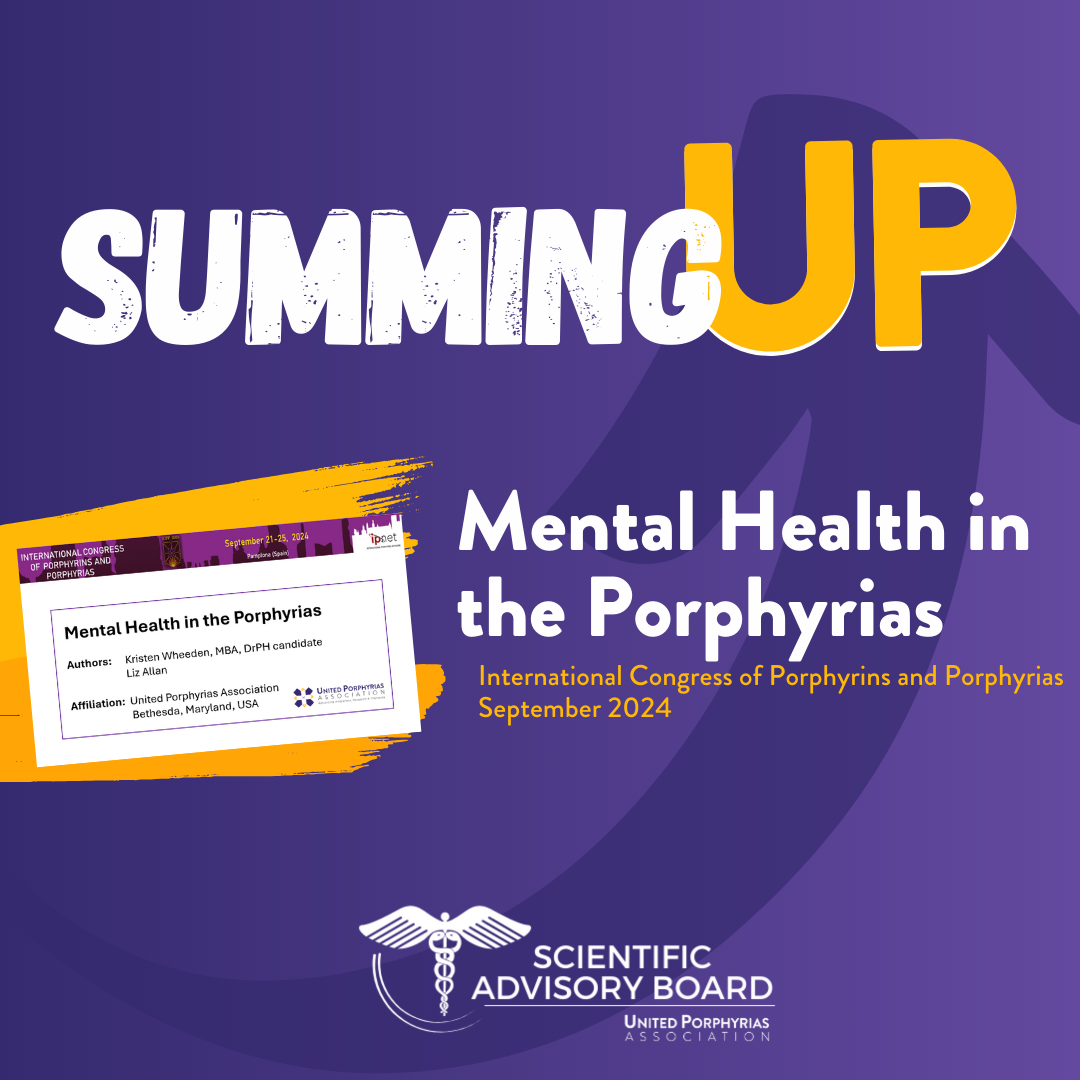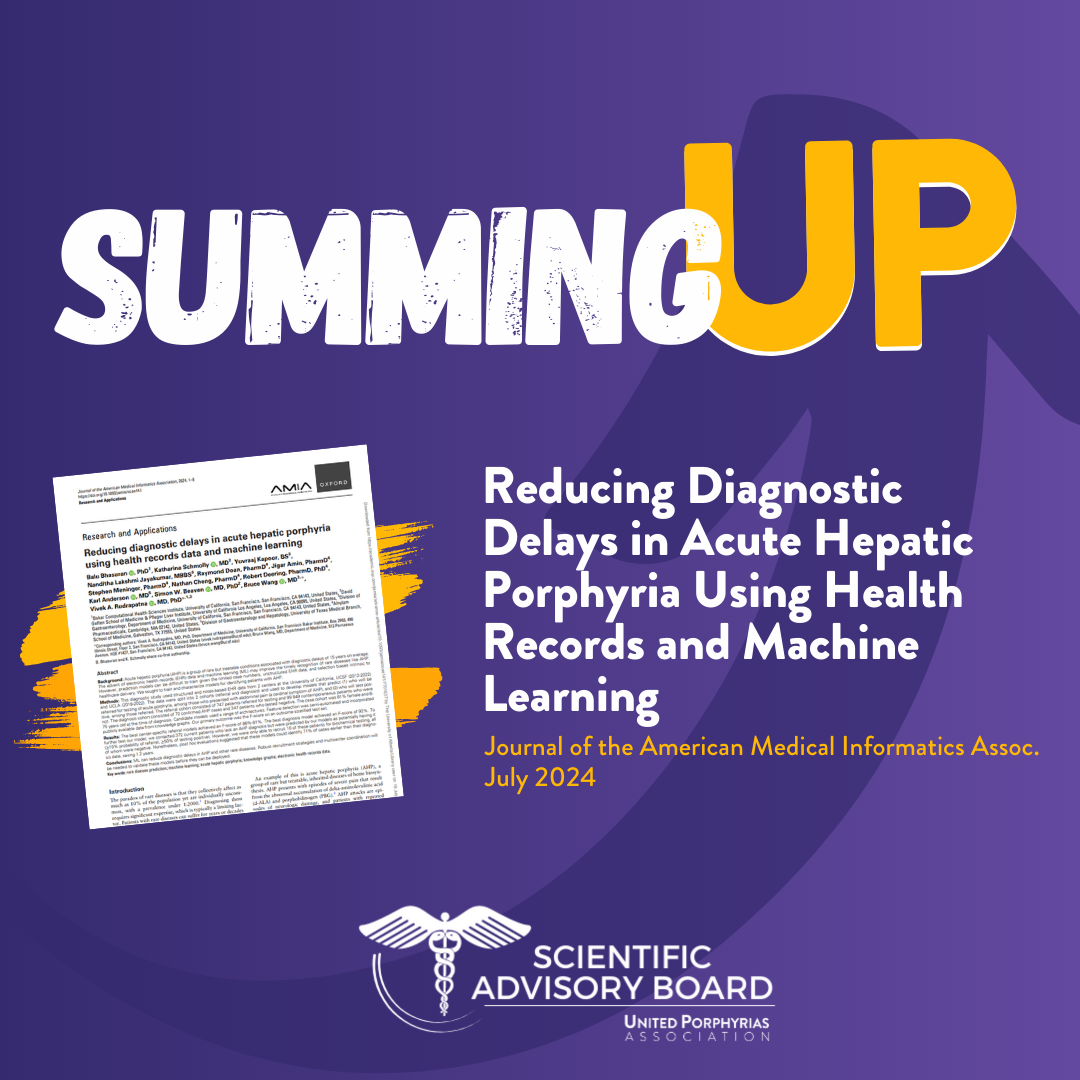Using AI to Diagnose Porphyria
Summing UP features the latest porphyria research in easy-to-understand summaries that have been reviewed and approved by the UPA's Scientific Advisory Board of porphyria experts.
Reducing Diagnostic Delays in Acute Hepatic Porphyria Using Health Records and Machine Learning
Journal of the American Medical Informatics Association
Published July 2024
Full article: https://doi.org/10.1093/jamia/ocae141
Acute hepatic porphyria (AHP) is a group of rare but treatable diseases. People with symptomatic AHP often wait about 15 years to get diagnosed, which is too long. This delay happens because the symptoms can look like other health problems, making it hard for doctors to figure out what’s wrong.
In this study, researchers wanted to see if they could use information from electronic health records (EHR) and machine learning (ML) to find people with AHP faster. EHRs are digital versions of patient charts that include a lot of detailed information about patients’ health journeys. Machine learning is a type of technology that can find patterns in data.
What did the research involve?
The researchers used health records from two hospitals, University of California San Francisco (UCSF) and University of California Los Angeles (UCLA), to create programs that could predict who might have AHP. They focused on two main groups of patients:
Referral Cohort: Patients who went to the hospital with belly pain, a common symptom of AHP, and were tested for the disease.
Diagnosis Cohort: Patients who were either confirmed to have AHP or were tested and found not to have it.
They used these groups to teach the models to:
Predict who should be tested for AHP.
Predict who would test positive for AHP.
How did the models do at finding people with porphyria?
The models did well in predicting who should be tested and who might have AHP:
The best model for deciding who should be tested had an accuracy of 86%-91%.
The model for diagnosing AHP had an accuracy of 92%.
The researchers also tried to test the models on new patients by reaching out to 372 people predicted to have AHP, but only 10 agreed to be tested, and none of them had AHP. However, the models showed that they could have identified 71% of confirmed AHP cases earlier than their actual diagnosis date, potentially saving 1.2 years of waiting.
Conclusions
Using machine learning and health records can help doctors diagnose AHP and other rare diseases faster. This technology needs to be tested in different hospitals and with more patients to make sure it works well everywhere. Reducing the time it takes to diagnose AHP can help patients get the right treatment sooner and improve their quality of life.
CONTENT REVIEWED BY UNITED PORPHYRIAS ASSOCIATION SCIENTIFIC ADVISORY BOARD






